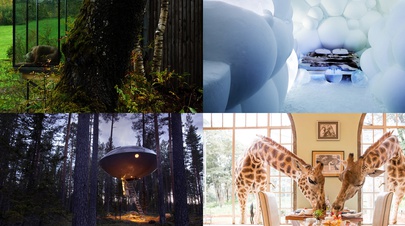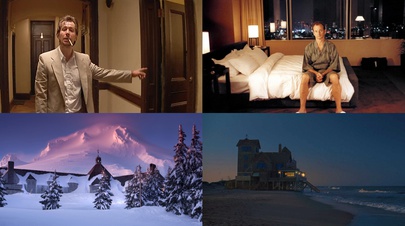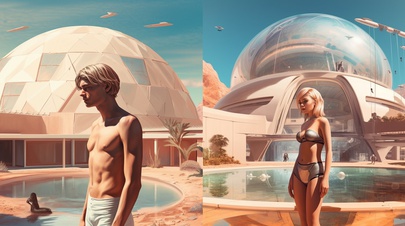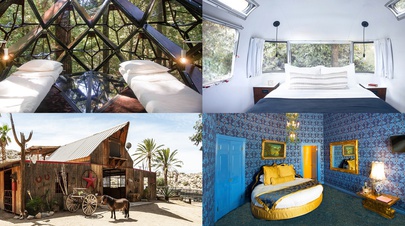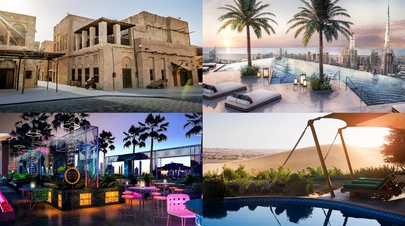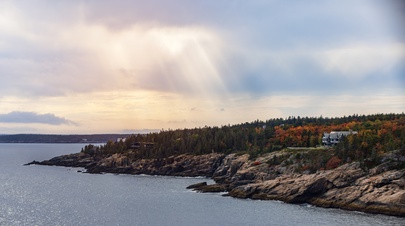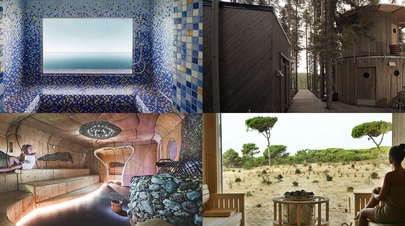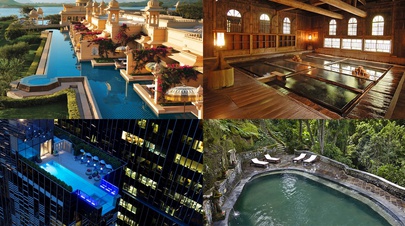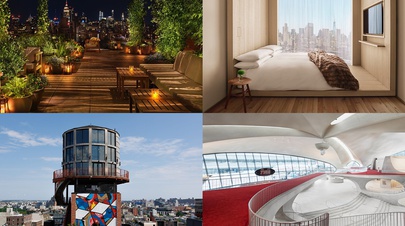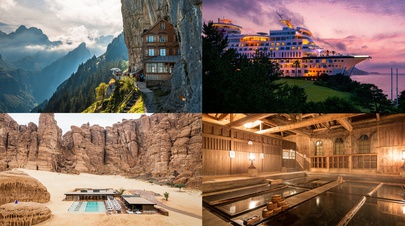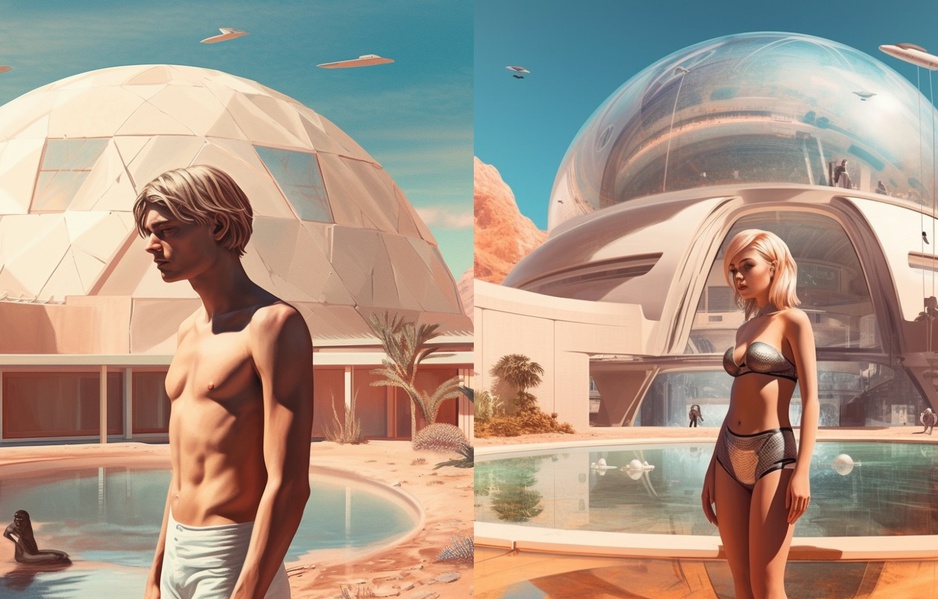
There's no getting around the fact that artificial intelligence significantly impacts how hotels are designed, serviced, and managed.
Hoteliers became accustomed to software suggesting the best pricing to fill empty rooms, manage finances and employees.
But today, thanks to generative artificial intelligence programs like Midjourney, DALL-E, and Stable Diffusion, anyone can design hotel buildings and interiors by describing how they should look.
To generate images, you need to use descriptive "prompts". The more specific words are used as input, the better result you will achieve.
While the AI-generated images will not translate into actual plans, the newest version of Midjourney brings photo-realistic renders of anything you can think of.
These images can then be used as inspiration to finalize the design based on the styling.
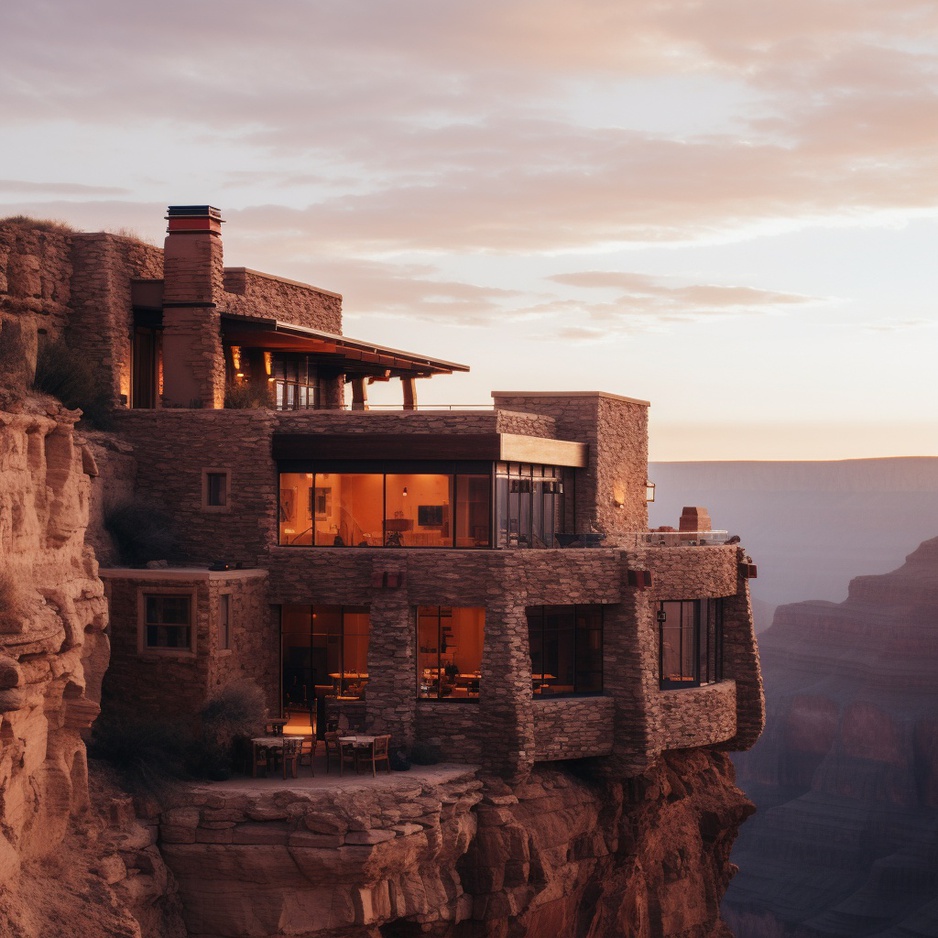
Let's see some examples!
AI Generated Hotels
This is a showcase of the AI image-generating capabilities.
1. Grand Canyon hotel
So far, the only hotel within the National Park is the rather boring-looking Grand Canyon Lodge on the North Rim.
But it takes only a moment to generate a hotel building that's perfectly fitting the rugged terrain of the Grand Canyon.
You can almost imagine how epic it would be to have a drink on the cliffside terrace while the sun sets over this majestic terrain.
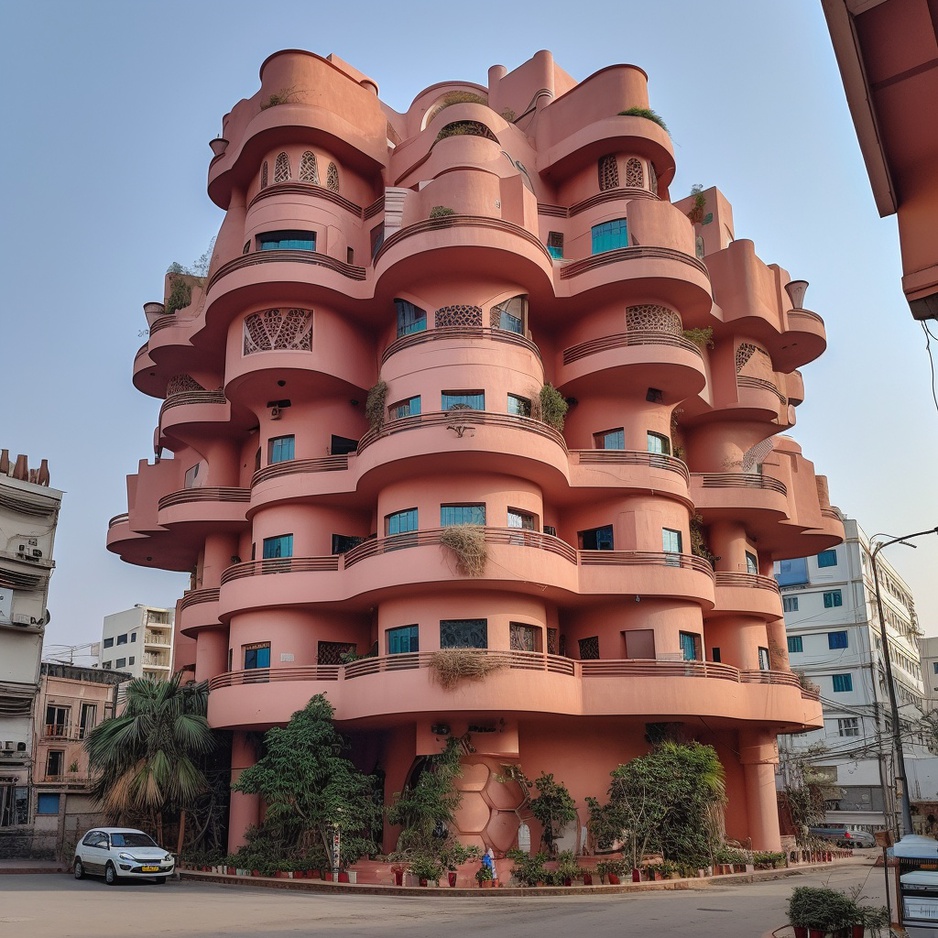
2. A palace hotel in Varanasi
Another prompt for the clever AI and the result is a classical style of temple architecture in India's holy city.
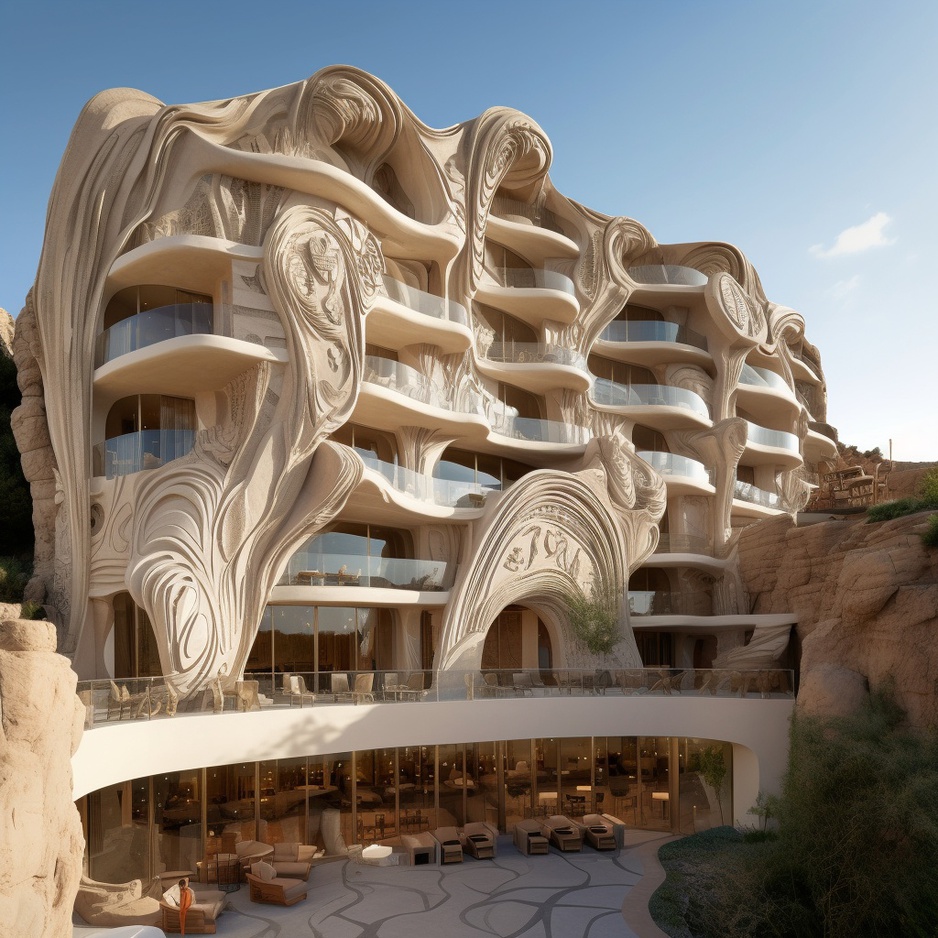
3. Building carved into stone
Designing a building into a rock formation is a challenging feat, except if you allow generative artificial intelligence to do its job. It's one of the reasons why even the world's most acclaimed architectural firms are using it.
For example, Zaha Hadid Architects uses AI text-to-image generators to play with ideas and potentially implement them in a project.
The beauty of generative designing is that the AI follows your instructions (set of rules) to render multiple variations for the same idea, and you can then analyze each and choose the best version.
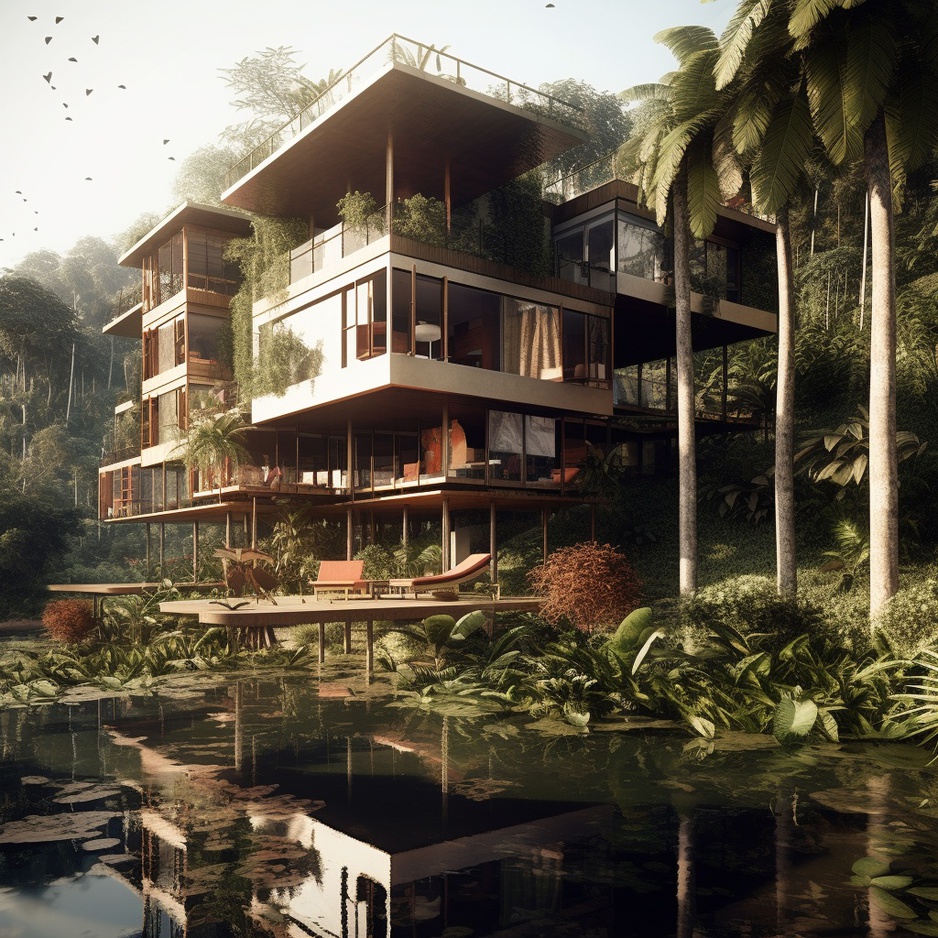
4. Modern tropical villa
An architect would probably scream in pain looking at the impossibilities of what the computer invents, but some design details may catch their attention.
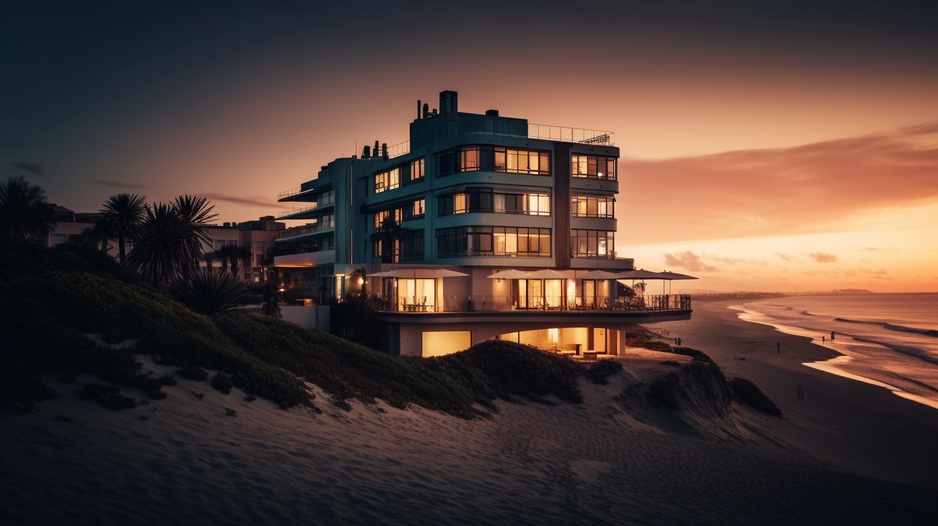
5. Beachside villa in Los Angeles
This AI-generated beauty is hard to distinguish from reality. The art deco building in the scenic dusk setting is where you can imagine yourself hanging out and forgetting to look at the small details giving away that this isn't a photo but a rendering.
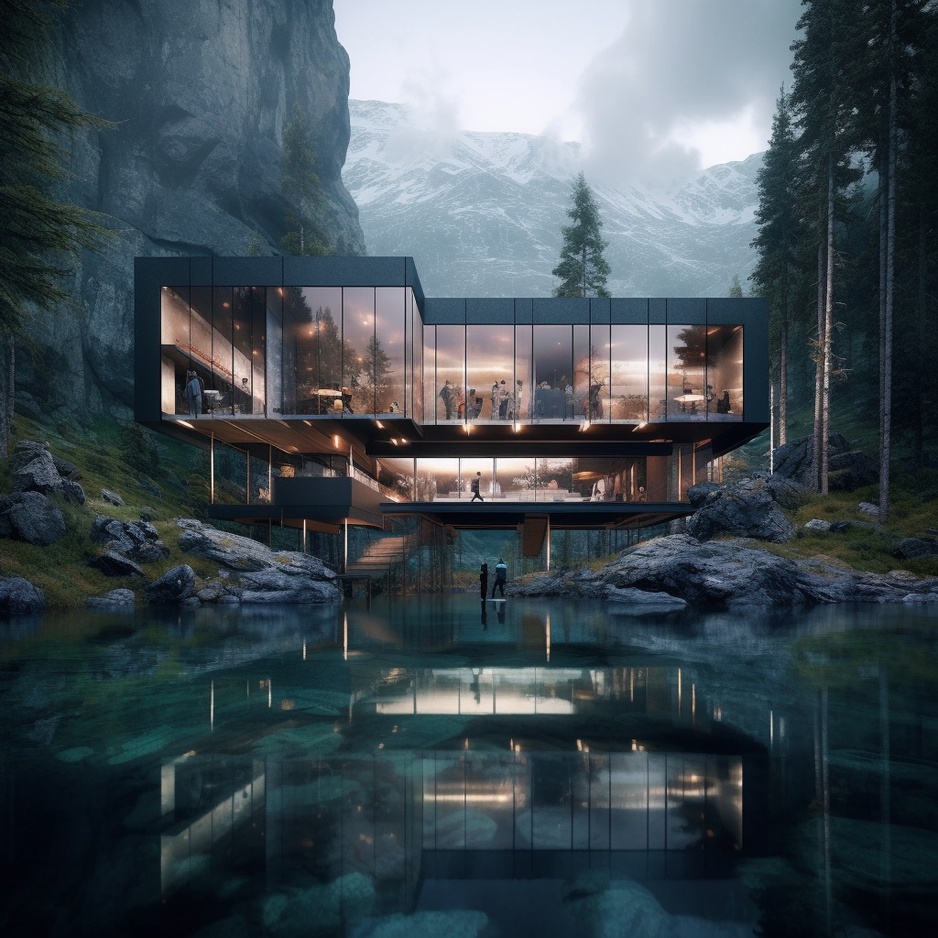
6. Swiss Alpine glass villa
What's amazing about AI-generated images is that you can come up with ideas that are not feasible in the real world.
For example, this Alpine setting on the bank of a crystal-clear lake would never get the green light from the Swiss authorities to construct a building. But here we are, a dream house in Switzerland's pristine high-altitude environment.
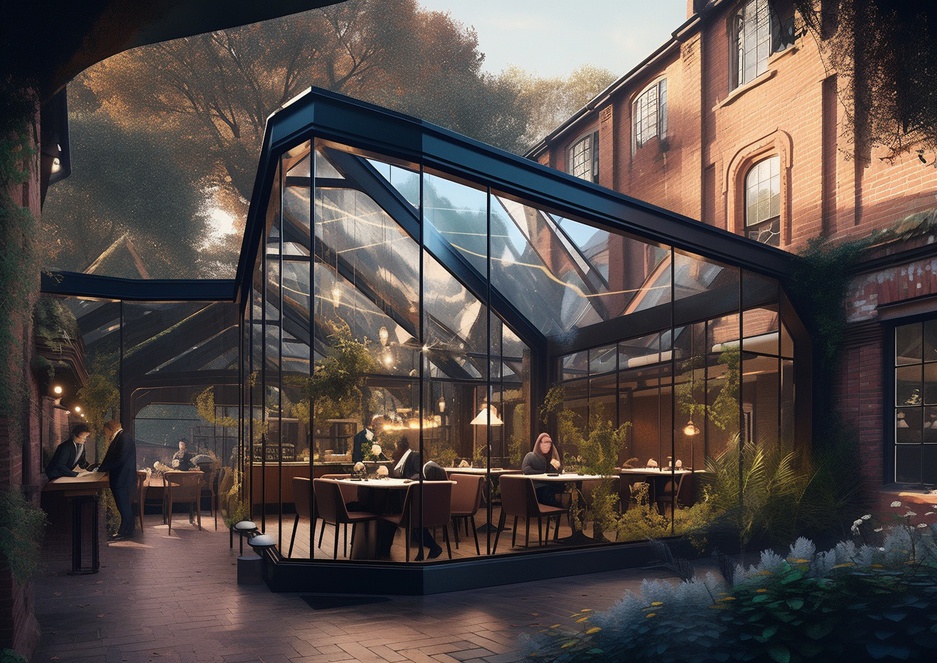
7. Glasshouse extension of a tenement house in London
The clever algorithm can design new parts of a building. In this case, an old red brick tenement house was upgraded with a modern but elegant glasshouse that gives home to a protected outdoor seating of a restaurant.
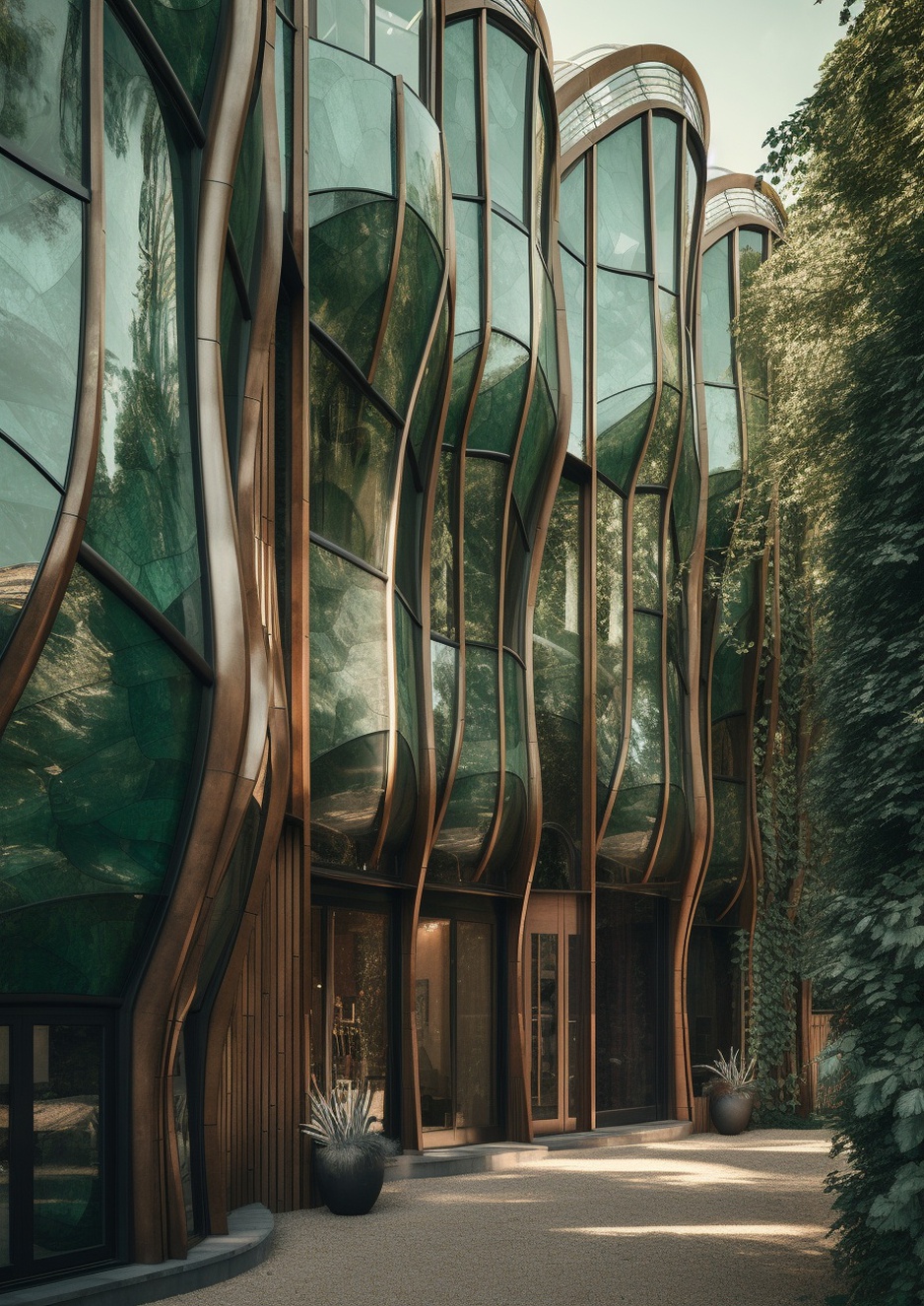
8. Contemporary architecture in London
After upgrading the historical British building, here is another example from London. The vast bending glass surfaces and brass joints dominate the sleek facade of this contemporary hotel.
Luckily, human architects are still ahead regarding fine details, like the facade of the brilliant Silo Hotel in Cape Town.
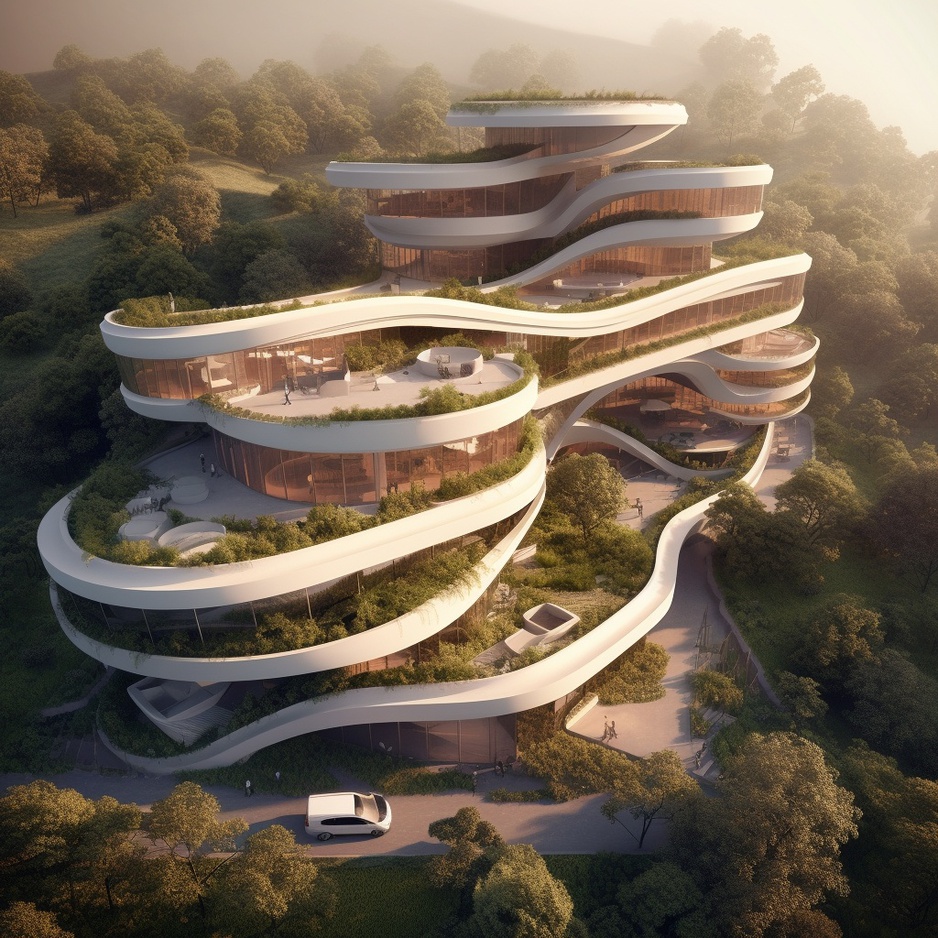
9. Curvy mountain resort
The AI seems to have a particular liking for curvy features. This imaginary mountain hotel is wilder than the Barin Ski Resort's building in Tehran.
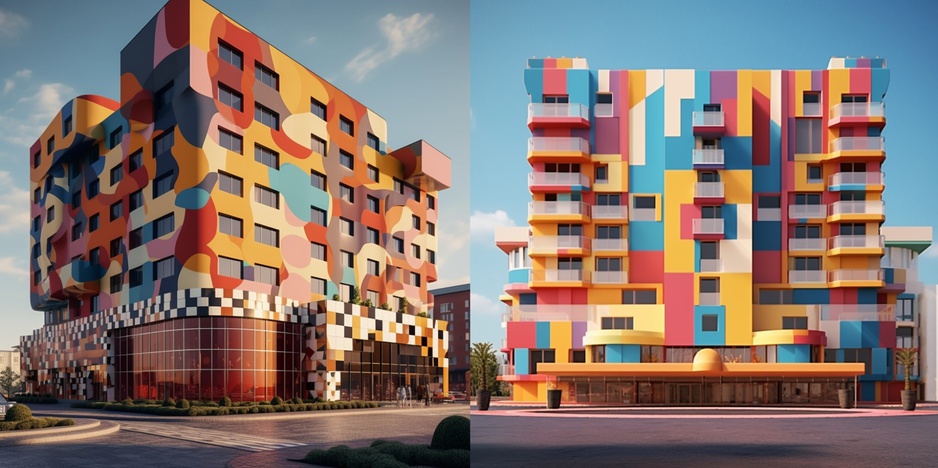
10. Pop art style 5-star hotel
Inspired by the 1950s and 60s commercial and popular culture, Andy Warhol and Roy Liechtenstein, among many others, have pioneered one of history's most eye-catching art styles.
Although the colorful art movement begs for a hotel design to incorporate its signature styling, there has not been any in real life to come to fruition. So, the AI's fantasy was let free to visualize how a pop art hotel would look like.
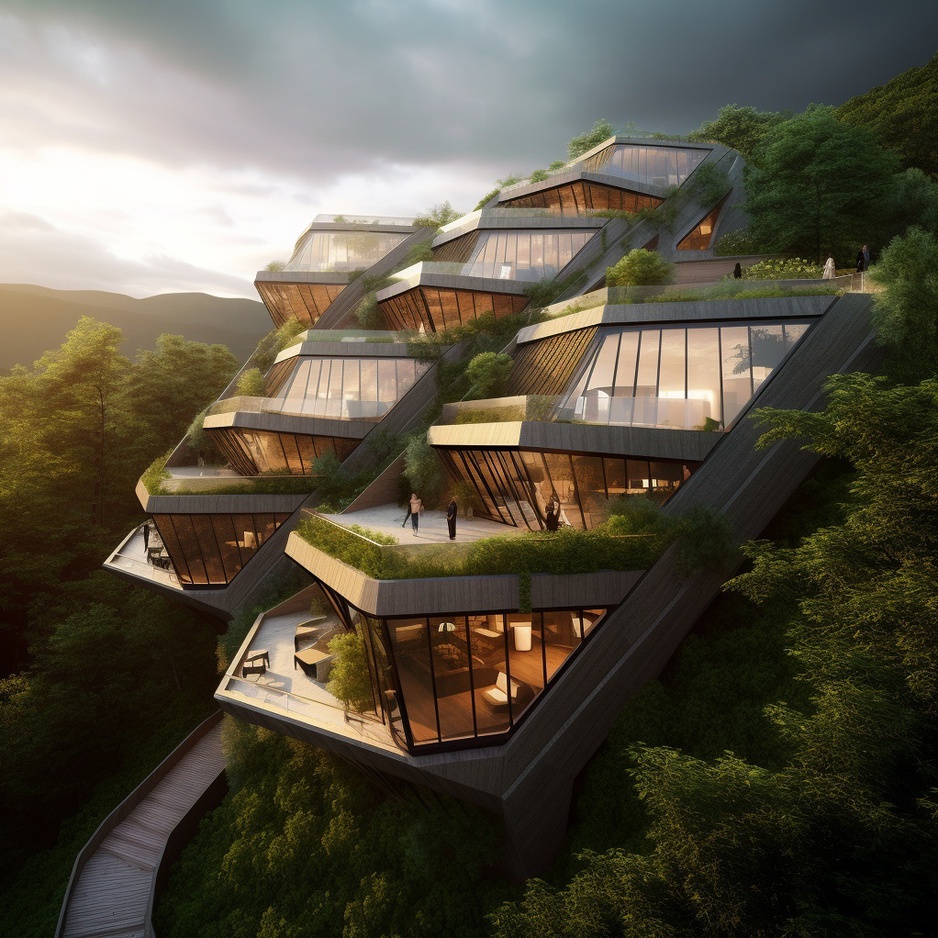
11. Modern Hanging Gardens of Babylon
If AI learned something well is generating modern buildings. This state-of-the-art structure blends into the mountainside with plants on its big terraces complementing the forest's greenery. It's the contemporary interpretation of the classic Hanging Gardens of Babylon.
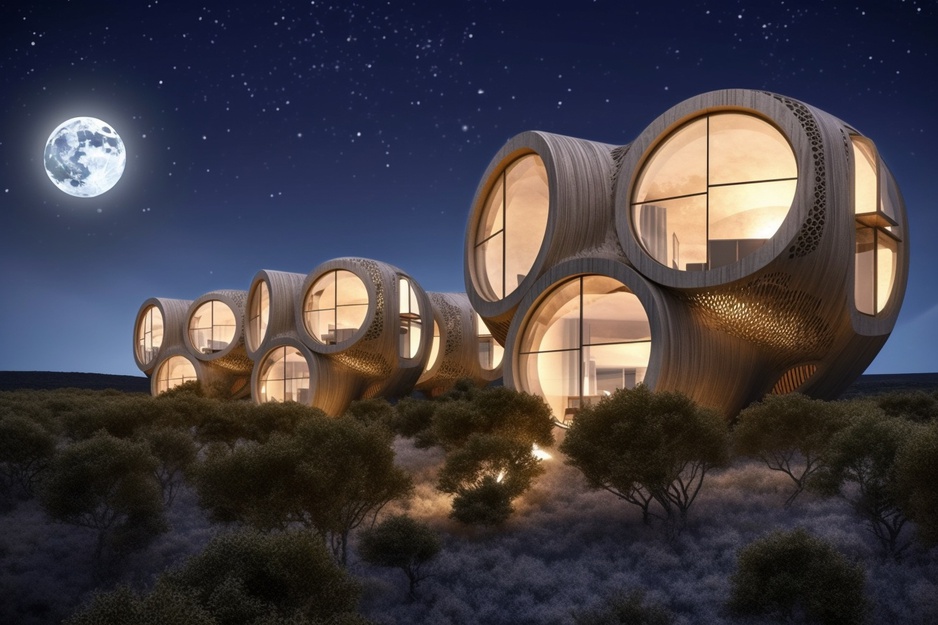
12. Atompunk eco hotel
Cyberpunk's quirky derivative from the 1945–1969 period was about portraying the retro-futuristic vision of the world. This eco atompunk hotel would make a great place to observe the nature of the Savannas and the starry nights.
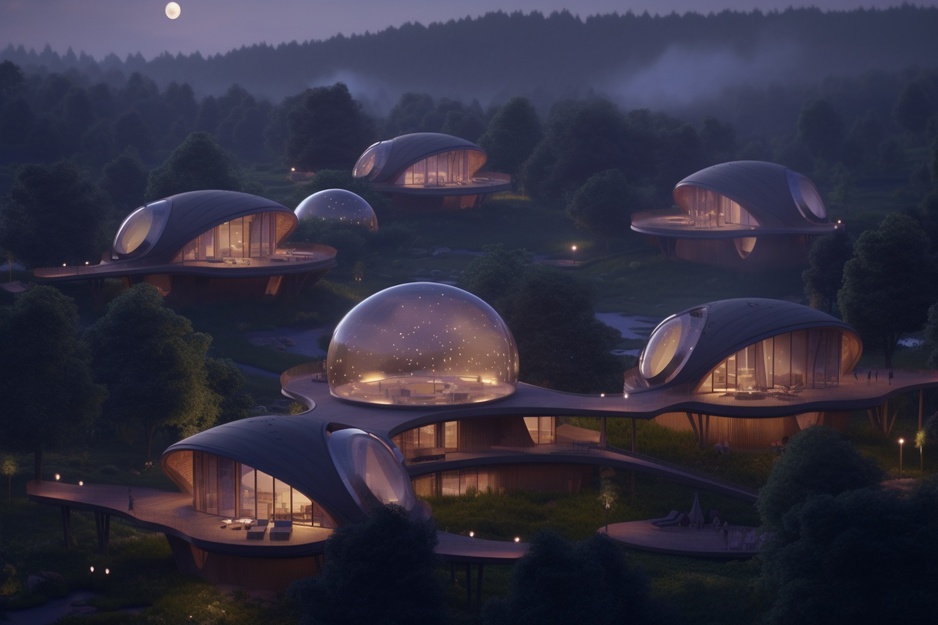
13. Neo-futuristic bubble lodges
Another example of atompunk is this neo-futurist resort with bubble-shaped buildings interconnected by wooden bridges and pathways. The resort's glass dome could be the perfect venue for a 3-star Michelin restaurant.
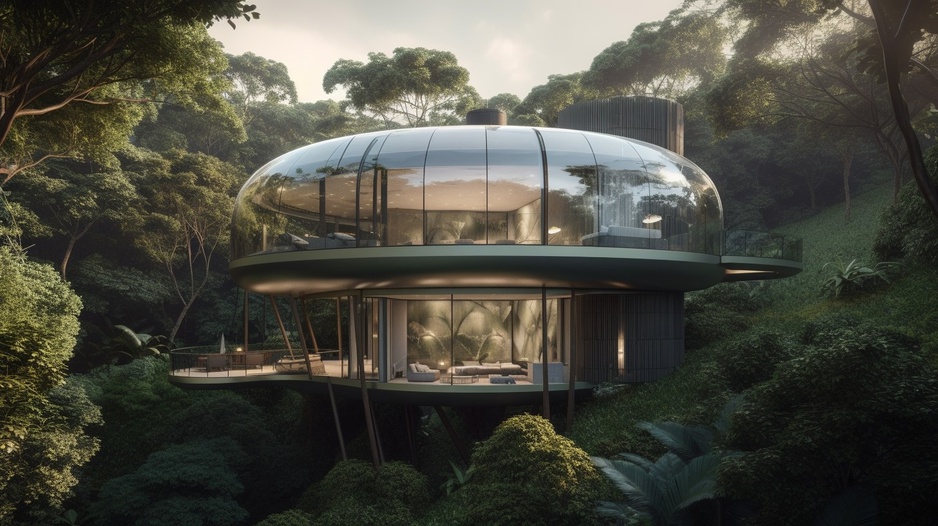
14. Glass treehouse
Shaped like the offspring of a spaceship and a treehouse, this forest getaway gives guests an unobstructed view of the surrounding environment through its vast glass facade. The AI cleverly hid the lift shaft in a bamboo tube.
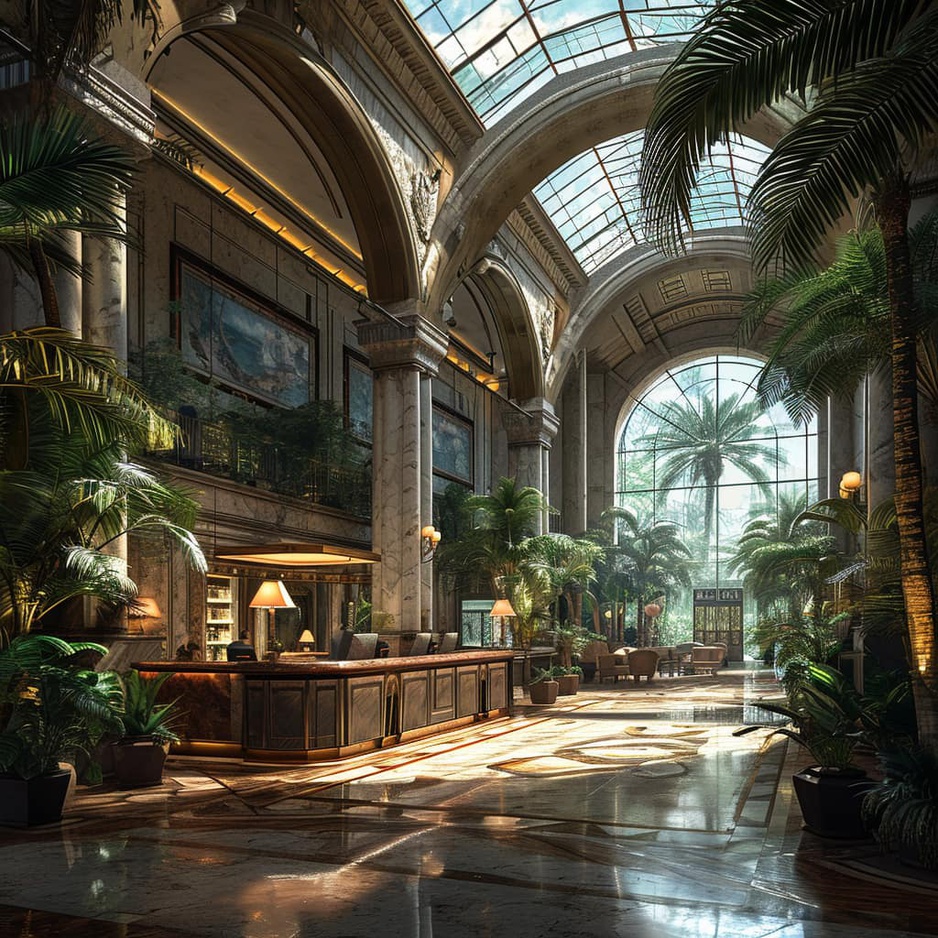
15. Grand jungle hotel
Reminiscent of Bahama's Hotel Atlantis Paradise Island, with its majestic African-inspired grand lobby, this AI-generated hotel delivers a realistic look of a next-level luxury hotel in the jungle. With elegant columns and tall palm trees, it would be one of the most incredible lobbies in the world.
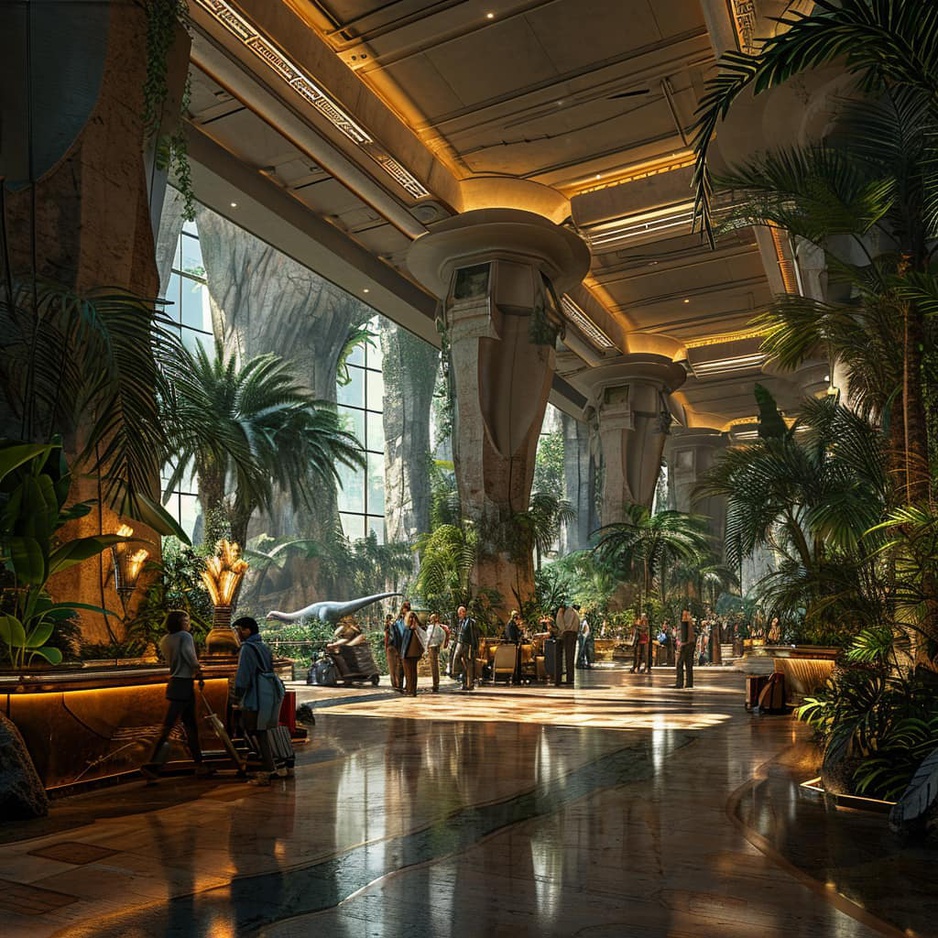
16. Jurassic Park hotel
Taking the jungle hotel concept a step further with the introduction of dinosaurs, it's time to imagine an interior with columns on steroids and a giant bulletproof glass wall that separates humans from animals of the Triassic, Jurassic, and Cretaceous periods.

